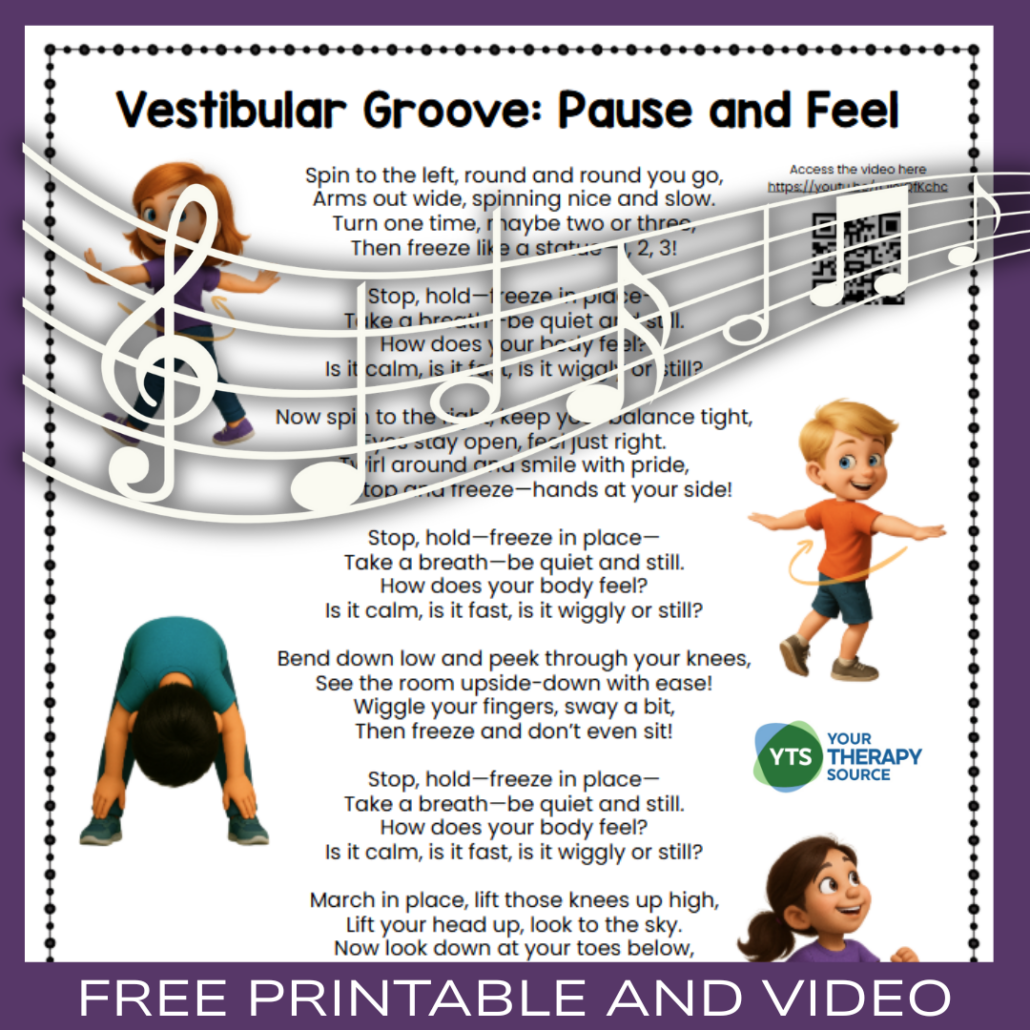Vestibular Song: Groove, Pause and Feel Free Printable
Vestibular Groove: Pause and Feel, is a movement-based song created to help children explore how different types of motion affect how their bodies feel. This vestibular song encourages children to spin, march, bend, and freeze, all while reflecting on their internal sensations. The printable includes the full lyrics along with a link to the video, making it easy to use at home, in the classroom, or during therapy sessions. This is from the complete Vestibular Groove packet.
This simple printable is ideal for brain breaks, sensory circuits, therapy sessions, or classroom lesson, offering a structured way to introduce vestibular input in a fun, reflective format. You can download it for free at the bottom of the post.
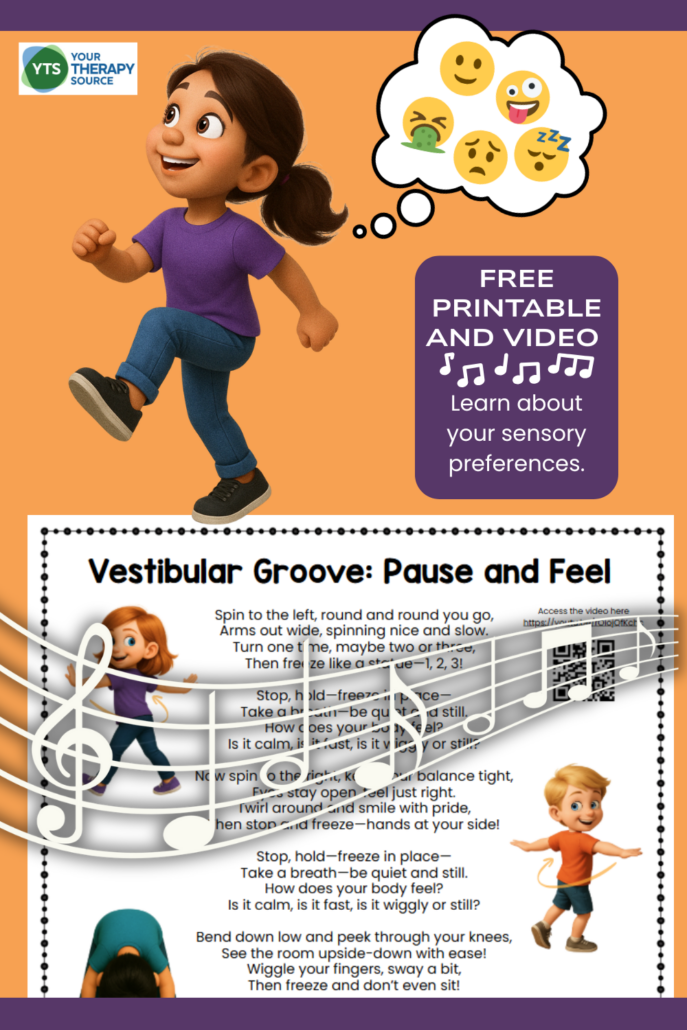
HOW TO DO THE VESTIBULAR GROOVE
Start by reviewing the lyrics in the printable. Each verse prompts a specific vestibular movement, followed by a pause for reflection. You can access the video by clicking the link included on the printable or by typing the URL directly into your browser. Then, follow along with the video and try each movement together as a group.
After each movement, children are encouraged to stop, breathe, and check in with their bodies. They might feel calm, wiggly, dizzy, or energized—and it’s all part of learning about how vestibular input affects them personally.
WATCH AND LISTEN TO THE SONG
WHAT IS THE PURPOSE OF THE VESTIBULAR SONG?
The purpose of the vestibular song is to help children become more aware of their sensory preferences related to movement. Vestibular input is powerful and can have a wide range of effects. For some children, movement may be calming or alerting. For others, it might be overwhelming or disorienting.
By encouraging kids to pause and reflect after each action, the song supports the development of body awareness, emotional regulation, and self-monitoring skills.
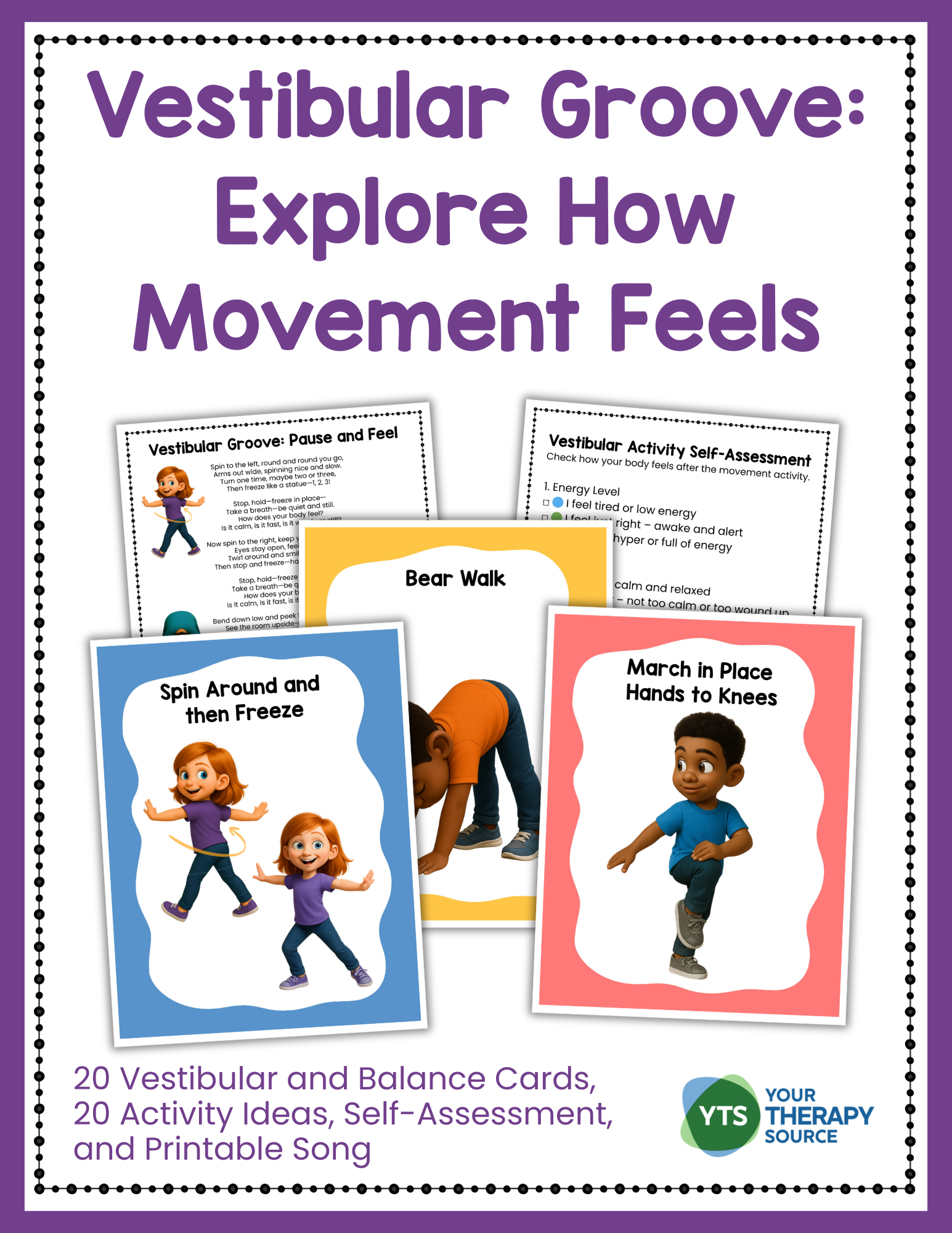
Vestibular Groove – Explore How Movement Feels
BE MINDFUL OF SENSORY PREFERENCES
Since vestibular input can be intense, it’s important to respect individual comfort levels. Children should never be forced to participate in any movement that makes them uncomfortable. Vestibular input can also have a delayed effect, meaning a child might feel the impact long after the activity is over. Always observe for signs of overstimulation and adjust or stop the activity as needed.
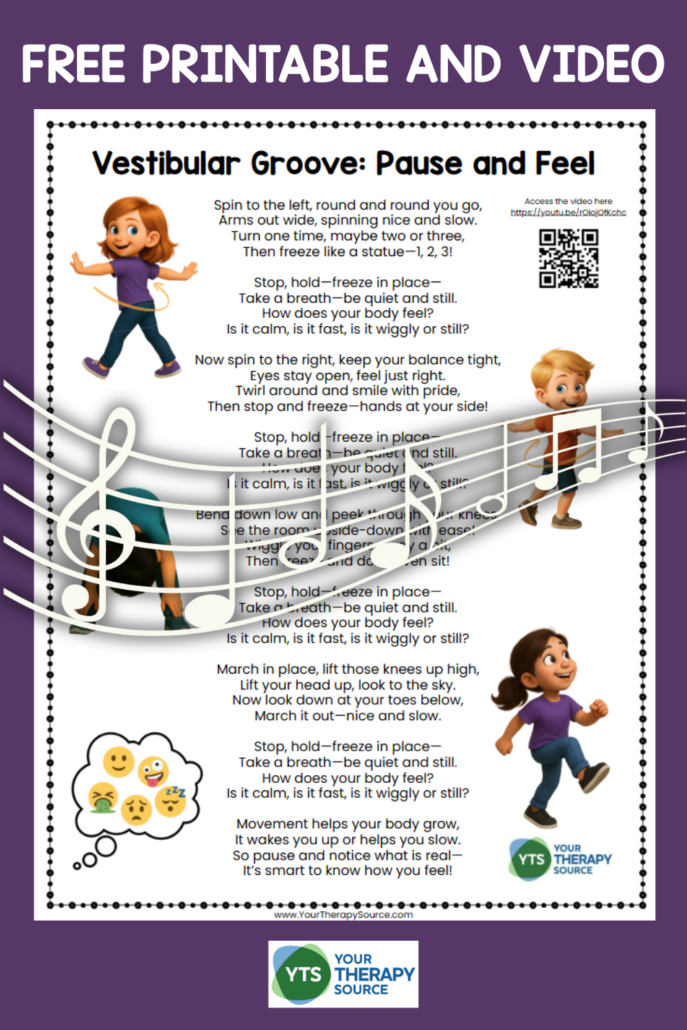
LEARN MORE ABOUT VESTIBULAR INPUT
For more information about vestibular input and how it affects child development, explore these related posts:
- Why the Vestibular System Matters
- What Is Vestibular Input?
- Energy Song for Movement and Regulation
- Self-Control Song to Support Regulation
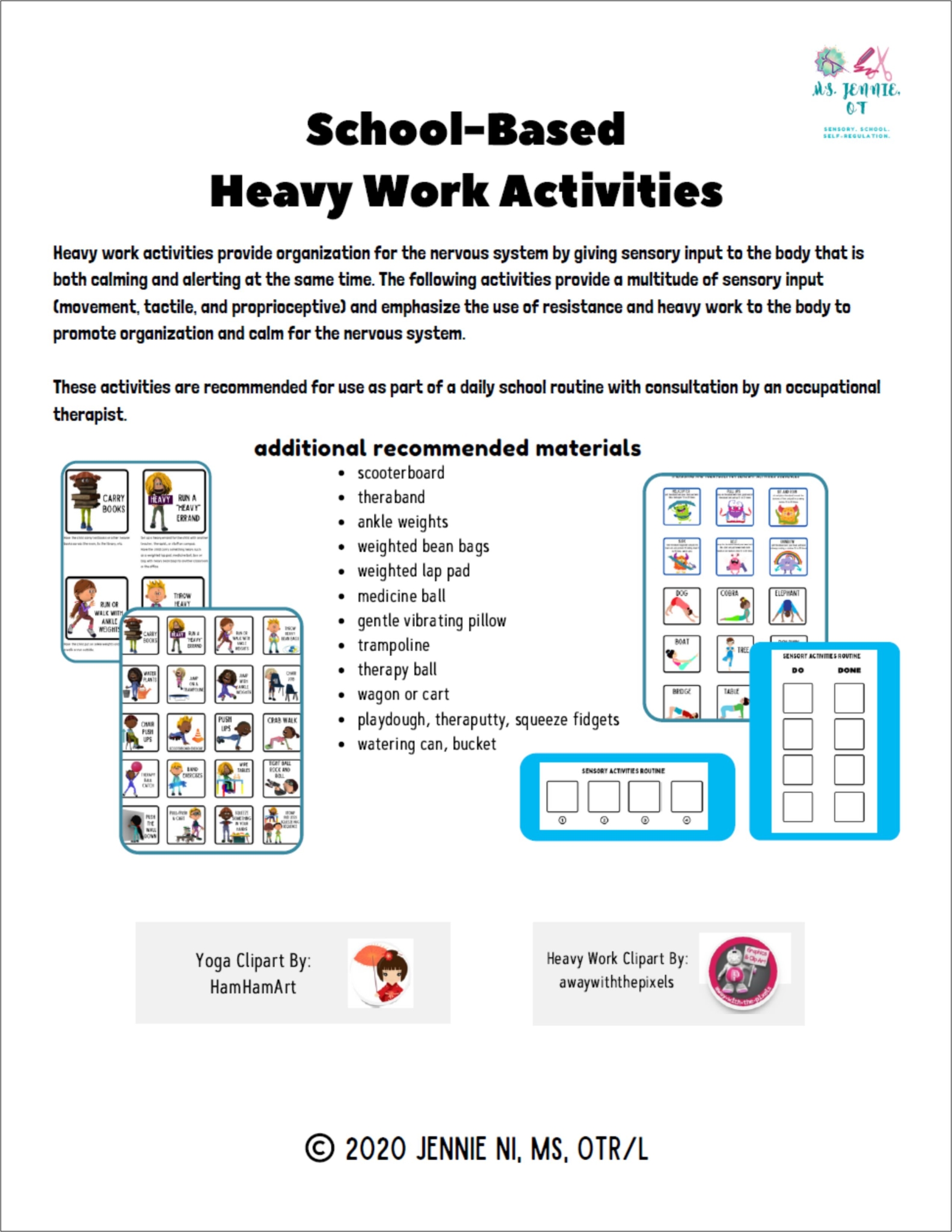
Heavy Work Sensory Activities Packet
DOWNLOAD YOUR FREE VESTIBULAR SONG HERE
Enter your email to get access to the printable song lyrics and video link. This free resource is an easy way to bring meaningful movement into your routine while helping children learn more about how their bodies respond to motion.
